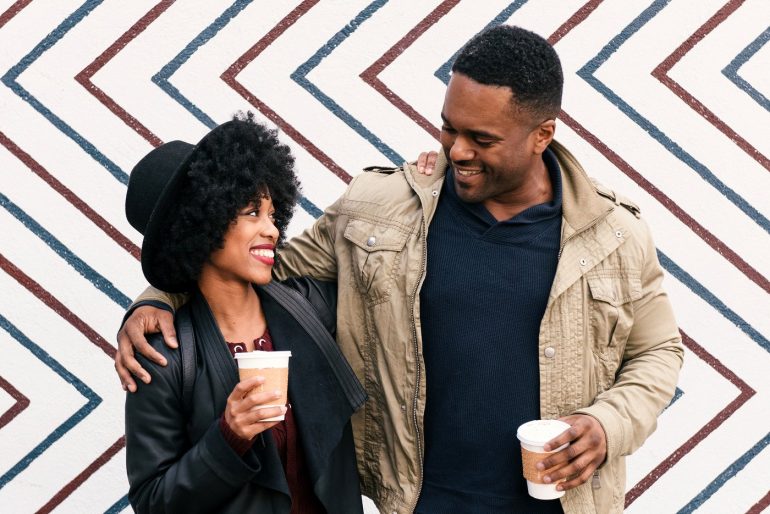In the late sixties, two psychologists teamed up to explore the mysteries of attraction and intimacy.
They couldn’t have imagined they would discover a formula that has been proven repeatedly to help break down emotional barriers, bringing people closer together.
Adapted from an article by Yasmin Anwar, Media Relations, UC Berkeley
Creating love in the lab
Around the time of the Summer of Love in 1967, Arthur Aron, then a UC Berkeley graduate student in psychology, kissed fellow student Elaine Spaulding in front of Dwinelle Hall.
What they felt at that moment was so profound that they soon married and teamed up to investigate the mysteries of attraction and intimacy.
“I fell in love very intensely,” said Aron, a visiting scholar at UC Berkeley and research professor at Stony Brook University in New York. “Given that I was studying social psychology, just for fun I looked for the research on love, but there was almost none.” So he took it on.
Questions that spark intimacy
In the nearly 50 years that Arthur and Elaine Aron have studied love, they have developed three dozen questions to create closeness in a lab setting. The result is not unlike the accelerated intimacy that can happen between strangers on an airplane or other close quarters.
Those original 36 questions have broken down emotional barriers between thousands of strangers, resulting in friendships, romance — and even some marriages.
Here is the first set of 12 questions, and you can see (all 36 questions here.)
1. Given the choice of anyone in the world, whom would you want as a dinner guest?
2. Would you like to be famous? In what way?
3. Before making a telephone call, do you ever rehearse what you are going to say? Why?
4. What would constitute a “perfect” day for you?
5. When did you last sing to yourself? To someone else?
6. If you were able to live to the age of 90 and retain either the mind or body of a 30-year-old for the last 60 years of your life, which would you want?
7. Do you have a secret hunch about how you will die?
8. Name three things you and your partner appear to have in common.
9. For what in your life do you feel most grateful?
10. If you could change anything about the way you were raised, what would it be?
11. Take four minutes and tell your partner your life story in as much detail as possible.
12. If you could wake up tomorrow having gained any one quality or ability, what would it be?
Rekindling old flames
A modern adaptation of the 36-question method brings together two couples who don’t know one another, and each of the four participants must answer the questions out loud. This variation was filmed for a 2015 Valentine’s Day segment on NBC’s Today Show.
Deepest hopes and dreams
Aron, who handed out the question cards for the on-camera experiment, hopes the segment captures the poignancy of the pairs revealing their deepest hopes, dreams and worries. The questions come in three sets of 12 and grow increasingly intense, though participants need not divulge more than they’re comfortable revealing.
“When I came in towards the end of each set of questions, there were people crying and talking so openly. It was amazing,” he said. “They all seemed really moved by it.”
Aron and fellow researchers used the two-couples approach last year in a study on how “self-disclosure” can rekindle romance in long-term couples.
“The theory is, when you’re first in a romantic relationship, there’s an intense excitement, but then you grow used to each other,” Aron said. “If you do something new and challenging, that reminds you of how exciting it can be with your partner, it makes your relationship better.”
Speeding up intimacy among strangers
The Arons, who live in Tiburon, California — and whose son, Elijah, works in the television industry in Los Angeles — have experimented with this format themselves, using it to deepen connections with their couple friends: “It’s a great way to spend an evening,” Aron said.
Originally formulated for a 1997 study called “The Experimental Generation of Interpersonal Closeness,” the 36 questions, or variations thereof, have been used in hundreds of studies, including several by UC Berkeley psychologist Rodolfo Mendoza-Denton, who studies cross-race friendships, among other things.
Aron uses the questions regularly in his lectures and freshman classes, pairing up students randomly or experimenting with cross-race friendships to better understand prejudice. The questions have even been used to improve understanding between police officers and community members in cities where tensions run high.
Whether this sense of closeness can last in a real-world setting is not guaranteed. While some connections that began in a lab endure, others run their course, just as in real life.
Interestingly, when the Arons first looked into how to manipulate a sense of closeness in a lab setting, they were not looking at the romantic implications.
“We had not created the 36 questions to help you fall in love,” wrote Elaine Aron in a Psychology Today post.
“To do a good job of that, we would have needed to do a study with people who, above all, came into it really wanting to fall in love, and we were not in that business,” she wrote.
“More important, we would need to follow up over time to know if the relationships lasted, an expensive process, and funding research on love is not easy.”
Nonetheless, that Summer of Love feeling that inspired Aron to study the underlying mechanisms of intimacy continues as he works on numerous studies and projects, many of which require the 36-question approach.
As for his answer to Question No. 1: Given the choice of anyone in the world, whom would you want as a dinner guest? He shrugged and pondered.
“Socrates,” he said. “Presuming I could get him alive.”








